Stressing an Equilibrium System by Changing the Concentration of Ions in Solution |
|
|
First, you will examine the equilibrium resulting from the combination of iron(III), Fe3+, ions and thiocyanate, SCN-, ions. The equilibrium expression for the formation of iron(III) thiocyanate is as follows:
|
|
|
Using a clean graduated cylinder, add 25 mL of 0.0020 M KSCN to a 100 mL beaker. To this solution, add 25 mL of deionized water, again using a clean graduated cylinder. Note the color of the solution and record this information in your laboratory notebook. |
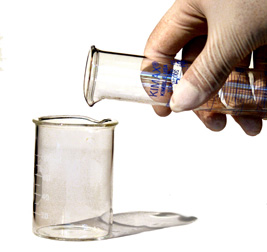 |
|
Add 5 drops of 0.02 M Fe(NO3)3 (aq) to this solution using a Pastuer pipet. The Pastuer pipets will be provided in the laboratory. Note the color of the solution. |
|
|
You will stress the resulting equilibrium system in three different ways. Pour equal amounts of this solution into four clean, dry test tubes. |
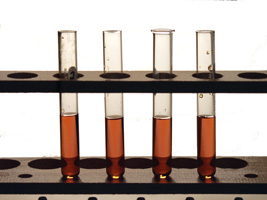 |
|
Label the test tubes A, B, C and D. |
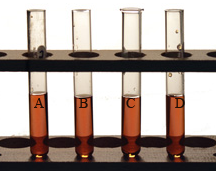 |
|
Test tube A will be a reference that you will use to compare to test tubes B, C, and D. |
|
|
To test tube B, add a scoop of NaH2PO4 (s) crystals using your metal spatula. Note the color change of the solution in your laboratory notebook. Clean and dry your spatula. |
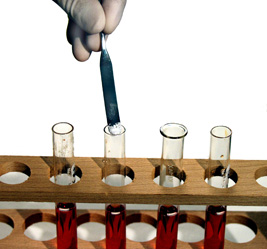 |
|
To test tube C, add a scoop of KSCN (s) crystals using your clean, dry metal spatula. Note the color change of the solution in your laboratory notebook. |
|
|
To test tube D, add 10 drops of 0.20 M Fe(NO3)3 (aq) using a Pastuer pipet. Note the color change of the solution in your laboratory notebook. |
|
|
In your laboratory notebook, designate which additions of ions above caused a shift in equilibrium. Describe whether or not the observed shift in equilibrium followed the prediction of Le Chatlier's principle. BE SPECIFIC! Your TA will be looking for the color change noted, the reason for the color change, and specifically whether or not this change indicates that the system is following Le Chatlier's principle. |
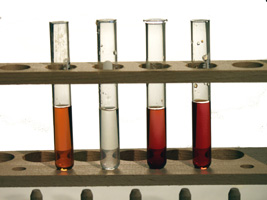 |
|
Dispose of the contents of each test tube in the appropriate waste carboy. Clean and dry the test tubes before moving on to the next section. |
|
